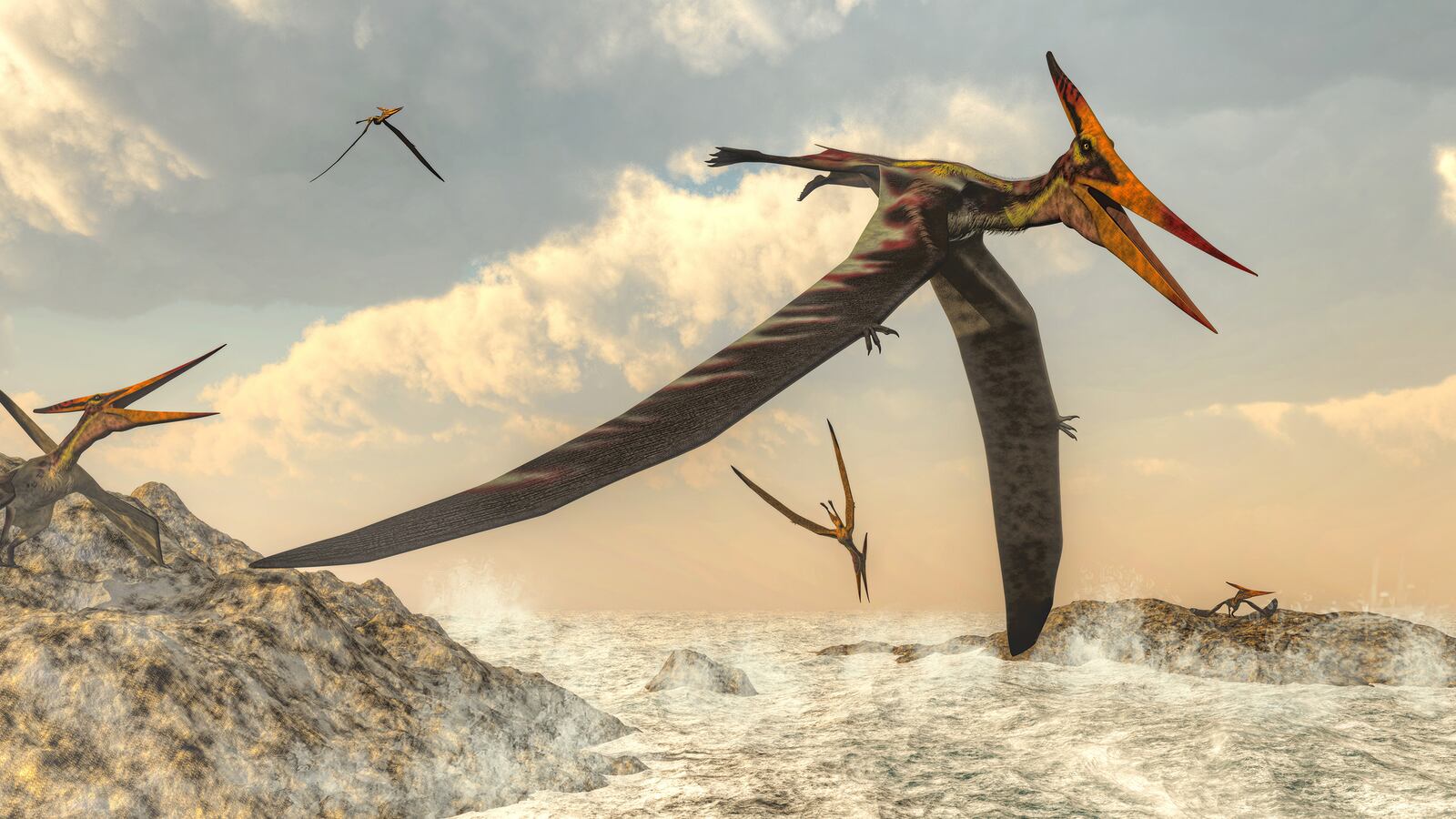On Thursday, an international team of paleontologists announced the discovery of more than 200 fossilized pterosaur eggs in the journal Science, reopening debate about the first vertebrate animals to take to the skies.
Led by Xiaolin Wang at the Chinese Academy of Sciences, the researchers suggest that the eggs’ interior proves that hatchling pterosaurs, like birds today, wouldn’t have been able to fly for a while after birth, and would have required mom or dad to bring food to them.
That’s a hugely controversial proposal: As it stands, the conventional wisdom among pterosaur experts is that babies were fairly mobile soon after birth, and would have taken flight within hours or days.
“It is an awesome discovery,” Michael Habib, an anatomist and paleontologist with the University of Southern California, who was not involved in the research, told The Daily Beast. “This will be one of the most important pterosaur discoveries in the last couple of decades, and it's probably the most important discovery in terms of embryological development and egg structure in pterosaurs.”

Hundreds of pterosaur bones laying on the surface, demonstrating the richness of these sites.
Credit: Alexander Kellner (Museu Nacional/UFRJ)Pterosaurs—a group of flying reptiles that lived among dinosaurs, but are not technically classified as dinosaurs—are at once captivating and elusive. Our imaginations soar at the thought of the ancient winged reptiles, some as tall as giraffes, gliding in air. But we can know them only through rare fossil remains, typically scattered and incomplete. Their bones were relatively light and delicate, which makes preservation over many millions of years less likely. Their eggs were covered not in a hard shell like that of a bird, but in a pliable, papery layer. It wasn’t long ago that whether pterosaurs laid eggs at all was a matter of speculation; there simply wasn’t the evidence to say for sure.
Before this find, there were only a few examples of fossilized embryo bits from pterosaurs. Of the 215 eggs found at this site, 16 included embryonic remains, increasing the accumulated evidence a few times over. The eggs deposited over time, presumably from storms that periodically washed away a popular pterosaur nesting site. The bones of a few adults of the same species, Hamipterus tianshanensis, were found as well. The discovery suggests, but does not directly show,that this species lived in colonies, with animals across age categories sticking together for support and protection.
If pterosaur parents stuck around, perhaps there wasn’t so much of an imperative for the little guys to take to skies immediately after hatching. And there’s evidence from one of the embryos, the authors argue, that they couldn’t if they tried. In a single individual, the researchers found that the thigh bone had mature features and shape (that is to say that it looked like an adult thigh bone, only smaller) while the wing bone had some features still missing or underdeveloped.
“We have made an important progress by showing that the same embryo had the humerus [one of the main bones of the wing] not well ossified, but had the femur very well developed,” Alexander Kellner of the Universidade Federal do Rio de Janeiro, one of the study authors, told The Daily Beast by email. He said the most likely explanation for this mismatched development is that hatchlings could run but not fly.
But not everyone is convinced that this new evidence, substantial as it is, has the weight to topple the standing theory.
Previous research on pterosaur embryos has suggested the opposite: that hatchling pterosaurs were pretty much mini-adults, which suggests they could get themselves around on land and in the air about as well as mom and dad. “Other evidence from the fossil record of pterosaurs suggests that hatchlings were very well developed and were independent being able to feed themselves and to fly,” Charles Deeming, a biologist with the University of Lincoln who specializes in embryonic development, told The Daily Beast via email. Deeming wrote an analysis of the research that accompanies the Science paper, arguing that it’s equally possible that the embryos at this site weren’t all that close to hatching, and their wings hadn’t fully formed yet.
Even if these embryos were close to hatching, Habib said, we can’t completely rule out flying ability at birth. Just because the wings are underdeveloped relative to the thighs does not mean they weren’t strong enough to take flight, he emphasized. After all, the amount of wing strength relative to body size required for liftoff would be less for a baby than for a larger adult. Habib would like to see a mechanical analysis based on the embryo’s measurements, to see if it would have had the power to fly even with its underdeveloped wings. As an expert in the biomechanics of flight, he might be just the guy to do it.
So was Petrie, the young pterosaur of The Land Before Time who at first couldn’t fly, developmentally challenged or normal for his age? At this point we don’t know the answer for sure, but thanks in part to this incredible trove of fossils, the answer will be knowable.





